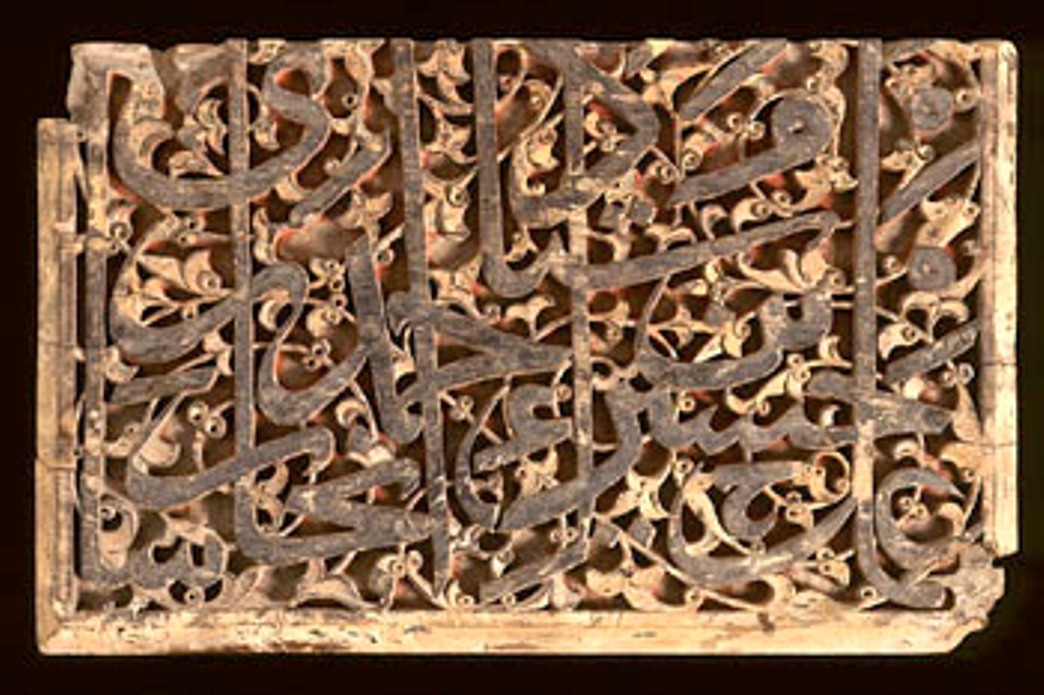|
I can hear my ears
Join Date: Oct 2003
Posts: 25,571
|

History of Science and Technology in Islam
 |  |  |  |  |   |  |  |  |  |  TRANSFER OF ISLAMIC TECHNOLOGY TO THE WEST[1]
TRANSFER OF ISLAMIC TECHNOLOGY TO THE WEST[1]
PART II TRANSMISSION OF ISLAMIC ENGINEERING
Medieval Islam was a prosperous and dynamic civilization, and much of its prosperity was due to an engineering technology that assisted in increasing the production of raw materials and finished products. In addition, the demand for scientific instruments, and the need to cater for the amusements and aesthetic pleasures of the leisured classes, was reflected in a tradition of fine technology based upon delicate and sensitive control mechanisms. This is a very wide subject indeed, and the Islamic contribution to the development of modern engineering will be indicated by means of citing individual cases of technology transfer.
Civil Engineering
Irrigation and Water Supply
With the spread of the Islamic Empire westward, agricultural and irrigation methods and techniques were introduced into the western regions of Islam. The rulers of al-Andalus and many of their followers were of Syrian origin, and the climate, terrain and hydraulic conditions in parts of southern Spain resemble those of Syria. It is hardly surprising, therefore, that the irrigation methods - technical and administrative - in Valencia closely resemble the methods applied in the Ghuta of Damascus.[2]
There is a unanimous opinion among historians that the present Spanish irrigation systems of Valencia and Andalusia are of Muslim origin. In 1960 a celebration was held in Valencia commemorating the ‘Millennium of the Waters’. It expressed public recognition of the establishment of the irrigation system, and specifically of the Tribunal of Waters during the reign of 'Abd al-Rahman III'.
The irrigation system that had been instituted in the days of the caliphs in Valencia was perpetuated and confirmed under the succeeding dynasties, until, when the Christian conquerors appeared in the thirteenth century, it recommended itself for adoption, backed by the experienced benefits of several centuries. The Arabic names used in the irrigation systems give distinct proofs of the Moorish origin of the irrigation systems in eastern Spain.
There is some difference between eastern Spain (Valencia and Murcia) and the kingdom of Granada. The chief object of the Granada water supply system was not the irrigation of crops only but the distribution of water to the fountains and baths of the capital. In Granada the system is still "to an exceptional degree" the same as it was in the time of the Arabs, and we find undisturbed the institutions practiced by the Arabs themselves.

An acequia flowing toward Granada from the spring in the village of Alfucar in the foothills of the Sierra Nevada, was first built in the 13th century and is still flowing today
The Arabic systems in irrigations were diffused from al-Andalus to Christian Spain. This accounts for the Aragonese traditions of irrigation.
These systems of irrigation had migrated from Spain to America where we find them still practiced in San Antonio in Texas. The story begins properly in the Canary Islands where in the late fifteenth century; settlers from Spain introduced Islamic institutions of water distribution. They brought with them to the American southwest both the technology and institutional framework for irrigation and the distribution of water.
The Qanat
The qanat system was an efficient method for irrigation and water supply. It originated in pre-Islamic Iran. The qanat technology spread westward to North Africa, Spain, and Sicily. The Andalusi agronomical writers provide practical advice on well-digging and qanat construction.
From Spain the qanat technology was transferred to the New World and qanats have been found in Mexico, Peru, and Chile. In the 1970s a qanat system 2.3 kilometers long was located in the La Venta area, just 10 km northwest of Guadalajara, Mexico.
In Palermo, Italy, a qanat system from the Arab days was used to bring fresh water to the city and to irrigate its beautiful gardens. There are current plans to revive and reconstruct the Arabic qanat and utilize it to solve the acute needs of the modern city of Palermo for potable water. The project in hand is of great historical, archaeological, geological and hydro-geological importance. It is already of great interest for tourists.
Dams
There are many Muslim dams in Spain, a large number of which were built during the tenth century AD, the golden age of Umayyad power in the peninsula. In this period, for example, many small dams, or azuds, were built on the 150-mile-long River Turia, which flows into the Mediterranean at Valencia. (In passing it is important to note the Spanish word azud, from Arabic al-sadd, one of many modern irrigation terms taken directly from Arabic and certain proof of Muslim influence on Spanish technology.) Eight of these dams are spread over six miles of river in Valencia, and serve the local irrigation system. Some of the canals carry water much further, particularly to the Valencian rice fields. These, of course, were established by the Muslims, and continue to be one of the most important rice-producing centres in Europe. Because of their safe design and method of construction, and because they were provided with deep and very firm foundations, the Turia dams have been able to survive the dangerous flood conditions for 1000 years.[3]
Mechanical Engineering
Water-Raising Machines
The saqiya was widely used in the Muslim world from the earliest days onwards. It was introduced to the Iberian Peninsula by the Muslims, where it was massively exploited. Its Maximum expansion in the Valencian Country took place throughout the eighteenth century. In 1921 their number amounted to 6000 installed in the Orchards of Valencia, which supplied water to 17866 hectares. Throughout the twentieth century they have been replaced by hydraulic pumps.

__________________
This body holding me reminds me of my own mortality
Embrace this moment, remember
We are eternal, all this pain is an illusion ~MJKeenan
|